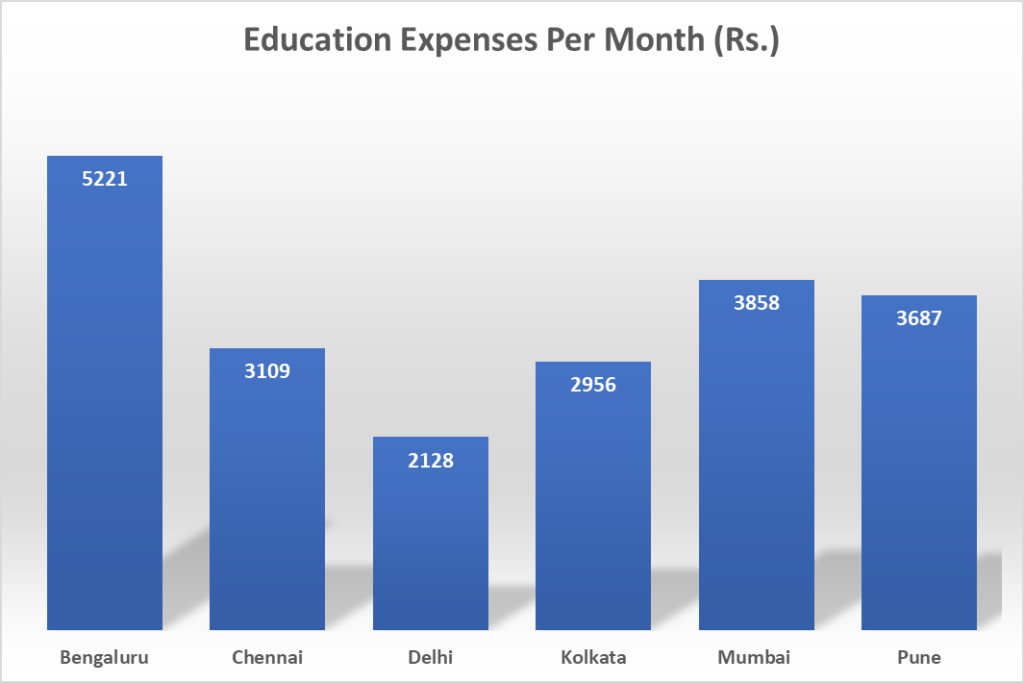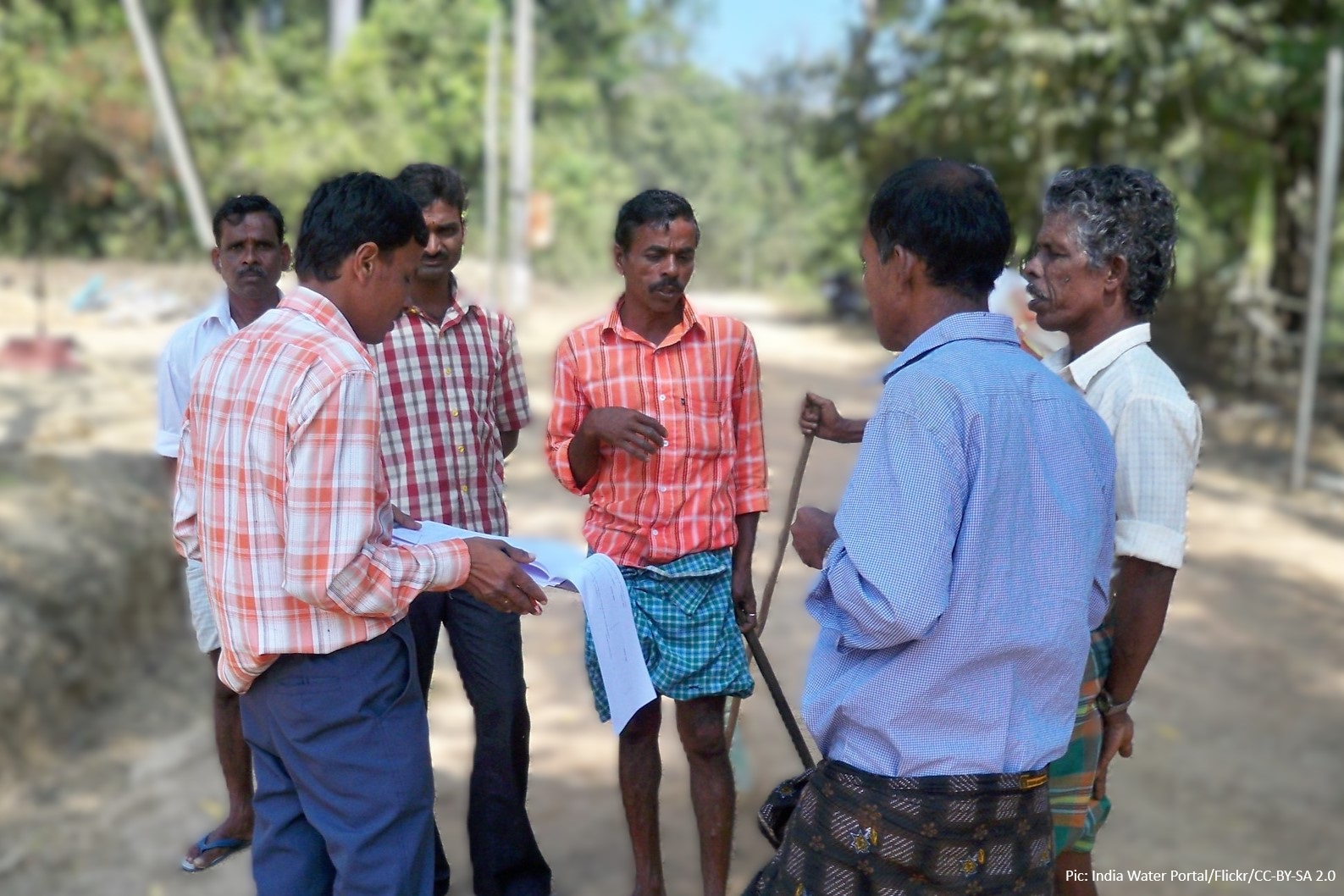The Comprehensive Modular Surveys(CMS) are surveys done by the National Statistics Office (NSO) of the Ministry of Statistics and Program Implementation (MoSPI), Government of India. They cover different aspects of day to day living in India.
The 79th round Comprehensive Annual Modular Survey (CAMS) was conducted in 2022-23 and the data is available here. Recently, the MoSPI released data for two surveys, the “CMS Telecom” to survey the usage of mobile phones and internet, and “CMS Education” to survey the state of education, primarily the cost of education and prevalence of private coaching.
Cost of Education
Given the varied number of samples for students of different classes, we looked at the cost of enrollment for a Class 1 student and a Class 10 student across large Indian cities.

What we found was that Bengaluru is the most expensive, costing on average Rs. 62000 per year. This is vastly higher than other cities, with Chennai being the next most expensive at Rs. 35,500. The rest of the cities are around the Rs. 25,000 mark. The data suggests that a Class 1 education in Bengaluru costs more than twice of other cities like Mumbai, Pune, Hyderabad or Delhi.
The same pattern repeats for Class 10 education expenses.The expenses in Bengaluru, Chennai and Mumbai are more than Rs. 10000 over a Class 1 student’s. However, in Hyderabad the difference is more than double, while in Delhi it is only marginally higher.
The most curious case is of Pune where the survey shows that it is cheaper to study in Class 10 than Class 1. Bengaluru is also four times more expensive to study Class 10 in than Pune. Surely, something is off with the data, given so much variance across the cities?

A case of lack of samples
The first question to ask about a sample survey is the number of samples in the CMS survey. While for the entire country, the number of samples is around 221,000 there is wide variance when it comes to our cities.

While the NSO surveyed more than 3000 people in Delhi, of which more than 800 were students enrolled in different classes, the number drops to three digits as you move farther from Delhi. With an estimated population of 15 million, can 1000 samples paint a reasonable picture for Bengaluru or 500 samples for a similarly large Chennai?
Large cities like Kolkata and Chennai show less than 150 students surveyed for the data. While the number in Hyderabad is 170 students out of a total of 603 surveyed, this includes Rangareddy district, as the actual number for Hyderabad is extremely poor, a total of 82 people surveyed, not just students. This despite a population in the millions for both Hyderabad and Rangareddy districts.

Declining Samples
The number of samples for our cities in NSO surveys generally tend to be on the higher side. For instance, the Household Consumption and Expenditure Survey of 2022-23 surveyed close to 13000 people in Delhi, 10000 in Mumbai and 7000 in Bengaluru.
While it still shows a bias with higher samples in Pune when compared to cities with more population like Chennai and Bengaluru, the numbers were still reasonably high. Hyderabad has always been an outlier in NSO surveys with very samples across all surveys.

Incidentally, the HCES survey had tried to asses how much a household pays for children’s education and found that while Bengaluru is the most expensive, at more than Rs. 60000 per annum, others were not as far behind as the CMS shows. Mumbai and Pune were definitely not cheaper than Delhi.

More recently, the Comprehensive Annual Modular Survey (CAMS) of 2022-23 also had a similar number of samples as the HCES with similar sampling size differences. Hyderabad, again had fewer than 200 samples.

Unfortunately, the sudden decline in survey samples does not seem a one-off. The recent CMS Telecom also showed similar issues with very few samples, with barely any sampling being done across most cities, except in Delhi.

Surveys like the HCES, the CAMS, the Multi-indicator Survey (MIS) and the National Time Use Survey (TUS) are important to gauge how the country is doing – socially and economically. Having large samples that can give a realistic picture of the population is important not only at the national level, but also at the cities and states level so that the data can be parsed and analysed at multiple levels.
Increasingly there seems to be a tendency to concentrate these surveys in specific parts of the country with little representation in other parts. Cities like Bengaluru, Chennai, Hyderabad and Kolkata are seeing less representation in important surveys when compared to cities like Pune, Mumbai and Delhi. This is an imbalance the NSO needs to address in future.

